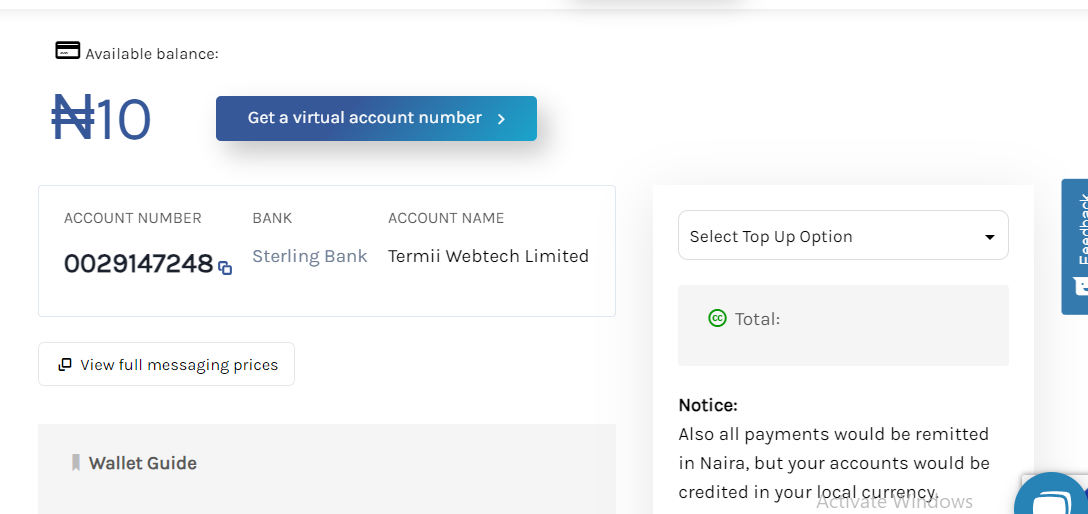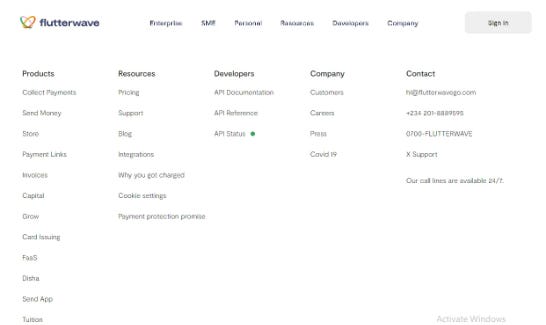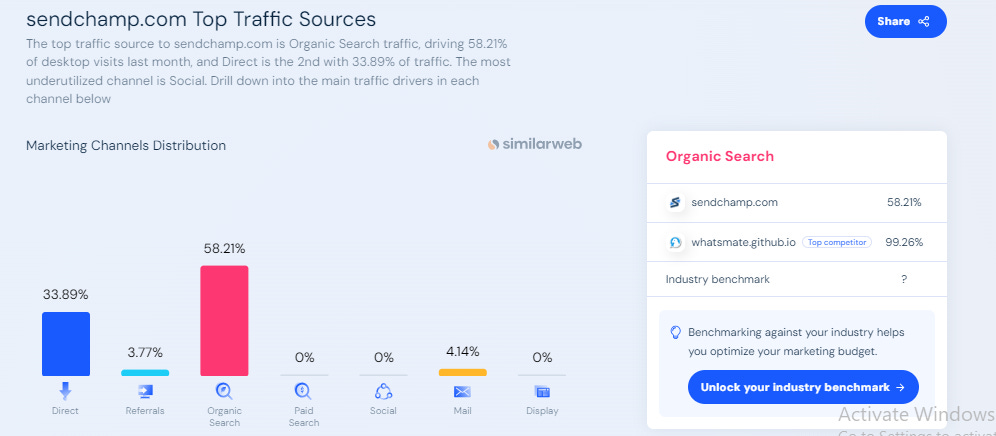Welcome to the 6 people who have joined us since the last deep dive! Join other smart, curious folks by subscribing here.
Hi Friends,👋🏾
Happy International Women’s Day!
I hope you’re all having a great week so far!
In the last deep dive, we looked at Bumpa and how they help individuals start and launch an online businesses.
Today, we shift our focus to Termii - one of the few startups in the Communications Platform as a Service Space (a mouthful, i know😫).
In this deep-dive, we’ll cover:
What are APIs?
Winning in the CPaaS space
Motivating conversion.
Is raising moeny a good proxy for growth?
Setting the Strategy
Before we get into this, please can someone help with the pronunciation?
Is it called Ter-my, Ter-ma, or Ter-me?? I’ve heard different pronunciations and it just confuses me. So, if you know the correct one, please let us know🙂.
Break in intermission.
In our last deep-dive with Bumpa, I had recommended for them to grow, they could explore:
Removing the requirement to have a pro version of the app to access Bumpa. Seems like they removed it but the URL on their landing page doesn’t still allow me access the web version. Bumpa…FYA
Consider creating a group for community focused conversations. It seems like that has been take up somewhat even though it takes you to a google form to input your details.
Just like someone at Bumpa has gotten some value from us, if you learn anything in this deep dive and find it valuable, consider:
Forwarding this email to friends and telling them to subscribe
Share on LinkedIn, Twitter, and Facebook with a short note,
Share within your existing community, company slacks or group chats
UNDERSTANDING TERMII
Termii builds APIs and SDKs to enable communication between businesses and customers. They are among the few Communications Platform-as-a-Service (CPaaS) startups in the industry.
To understand Termii is to understand businesses like Infobip and Twilio. Termii is the Twilio of Africa.
Side note: Speaking of Twilio, I think we all remember the story of one Nigerian YC alum referring to another YC company in a different country. Could we be looking at another potential exit? 👀
Without confusing ourselves with acronyms, what is Termii and what does it actually do?
In my other article on APIs, APIs as connectors of systems that enable communication. They provide mission-critical yet non-core functionality that allows your business to serve you. For instance, a restaurant owner doesn’t need to build their payment infrastructure. Instead, with a few lines of code, they can connect to Paystack to accept payments from customers.
Similarly, Termii enables anyone to connect with their customers through messaging using similar APIs. Now, this could be in voice, text (SMS or Whatsapp) and email.
If you’ve ever used Paystack, Helium Health, Kuda, or even Shuttlers, you’ve used Termii in one way or the other. If you’ve collected payments via Paystack, those notifications were likely sent by Termii. If you’ve opened an account with Kuda or Moniepoint, Termii was probably used to verify you. If you have a kid learning on uLesson, you’ve probably received notifications about your child’s performance via SMS.
In essence, Termii helps these businesses to send alerts, and verify, and authenticate their customers’ details.
AWARENESS
Setting up that context, let’s discuss growth.
Termii targets startups in different industries like education (uLesson), healthcare (Helium health), financial services (Carbon, Kuda, Moniepoint), Logistics (Shuttlers, Topship) and lots more.
Oftentimes, industry experts use the number of logos a business has to understand their level of market penetration, revenue potential and in my case validate the presence of Product-Market Fit (PMF).
How many companies in a lowly invested industry like CPaaS can mention the quality and quantity of logos in the image above?
To compare them to competitors, let’s discuss Twilio, Infobip and Sendchamp.
In terms of sheer reach and awareness, Twilio takes the pie with Infobip taking second and then Sendchamp.
Twilio and Infobip are multinational companies with just two years separating both companies. Both companies are older than both Sendchamp and Termii by at least 10 years!
Infobip and Twilio are not priced in Naira while Sendchamp and Termii can be priced in Naira. Considering the macroeconomic conditions in Nigeria, this is a big advantage.
Twilio and Infobip are more focused on enterprise clients while Sendchamp and Termii are focused on startups and small businesses.
From no. 4 above, it’s not like Twilio or Infobip can’t be used by upstarts and small businesses. It’s just that, at the scale that they are at, they have become more “positioned” to serve the enterprise while companies like Termii have now become favourites of small businesses.
It’s no wonder that in a small market like CPaaS, developers (72%) know Termii enough to visit them directly.
CONSIDERATION.
Now, let’s assume that Termii is now known and I’ve decided to learn more about them. Do they do a good job of making me take the next step?
Termii does a good job with consideration. It has testimonials from businesses that use them (Omnibiz and Piggyvest), hosts an annual developer conference, and has self-serve onboarding.
The only things that I would add are:
Fix the developer webpage. It has now hosted two developer conferences since 2021 and people will be looking to see resources like conference recap, speaker notes and video recordings. It already has a 5-hour long YouTube video on its second edition that can be repurposed and shared across social media specifically LinkedIn and Twitter. LinkedIn because it can go upmarket to target the enterprise and Twitter because that’s a good channel where developers aggregate.
Explain and modify where Loop is placed on the website. Loop, unlike the Elevate conference, is a developer meetup hosted. The last one was hosted with Piggvest. To find Loop on the Termii website, I’d need to visit Termii, find the API docs, and then find Loop. It only takes someone to know what Loop is to find it. Besides the meetup, I would explain and place Loop on the homepage and position it as the space where Developers can ask questions about Termii and still connect.
ACTIVATION.
Now, Termii has made it easy for me to consider them so how fast does it take for me to see value?
Well…it depends.
During sign-up, I had included Sterling Bank as my employer, but it said that the company was already taken. But wait: “Does anyone own Sterling Bank, what do you mean that the company has already been taken? (we’ll get into how this should be modified in the strategy).
Anyway, I was able to sign up by using “Sterling” as the company.
Termii has a four-step on-boarding process:
Select channel.
Request Sender ID
Account setup (optional).
Choose message type.

We’ve seen the on-boarding but completing this does not mean the customer has been activated. From the previous deep dives, we’ve defined activation as the point where the customer begins to see value and where the company can extract value. What are the points Termii gives value?
Termii gives value in three ways:
Authentication. Makes it easy for anyone to authenticate anyone across SMS, email, voice and instant messaging (read: WhatsApp)
Cross-channel communication. Like with authentication, businesses can also be able to communicate with customers across those channels to send notifications and alerts.
Analytics.
If you’re not going through the integration route, you must first:
Fund your wallet.
Add or import your contact list.
Send messages/notifications.
Termii should be tracking wallets funded as leading indicators for sending messages/notifications.
So, the Activation metric I would track would be Time to the first message.
I don’t know if Termii tracks this, but they tried to get me started as soon as possible. The Monday after I signed up, I received a call from a support agent asking me about my needs and whether I needed any more help to use the product.
That was a sales-led motion rather than product-led because I really shouldn’t need to be called to use the product except…of course, you work for Sterling😏.
So, I would recommend that:
Termii can be intentional about its user journey. It can include different paths because a digital marketer may only be focused on messaging and notifications while a software engineer can be focused on verification and authentication.
To-dos. A list of To-do’s should be included after onboarding, so the individual knows the ideal next steps to get started as fast as possible.
Consider giving free credits. After signing up, I was fortunate to see N10 as my balance. I don’t remember loading my wallet especially as I had only just created an account. I also didn’t expect it because the FAQs says it doesn’t give free messages. It’s semantics to argue whether free credit is the same as free messages but if Termii gives free credit, it should make a deal out of it and mention it during onboarding to increase conversion.
LOYALTY/RETENTION.
Now, we have learned about Termii, signed up and sent our first message. What keeps me (individual/business) using the product over time?
A software engineer whose primary use case is user verification and authentication needs to continue acquiring new customers to verify. For a Digital marketer, their focus could only be on notifications and alerts. They can increase loyalty by:
Sending weekly reports of messaging performance across channels
Making it easier to share analytics reports with team members
Continue to u inbound sales leads to nurture customers (as they did for me)
Upsell customers to new use cases to increase potential revenue.
Even after all this, is a business that has almost every big Fintech, HealthTech, Transport tech name in its portfolio, GROWING?? It’s almost mad to ask it when Termii now works with >13k businesses and has enabled >700million customer transactions.
By doing a quick back-of-the-envelope math, it can be assumed that Termii is at least a $1.8m ARR business. If this is true, it means that based on its last fundraising ($3.78m), it only just raised 2x revenue. Compared to our fintech darlings, this is almost no increase.
So why?
Are investors being cautious?
Is the macro investing landscape weighing on CPaaS as an industry?
Is there money left on the table that Termii with all its muscle is just not earning?
SETTING THE STRATEGY
For API businesses like Termii, the way to increase revenue (without considering churn) could be expressed as:
Revenue = # of users * # of use cases * price per use case.
A fellow API company that has executed this is Flutterwave (you can also read my article on them here):
They expanded from being just known as a payments company to build products with context around payments. You need to collect payments in your store, you need to send money to pay tuition, you need a card to pay, you need capital to grow your business to collect payments from more people and on and on.
All these help Flutterwave increase the number of users it can serve which expands the number of use cases, and these use cases are billed at prices different from the other.
With that context, what can Termii do?
Grow within existing market. Because they already have the quality and scale to serve businesses, i think it would be hard to improve upon the product as is. They could instead consider new channels to reach customers. I think they're already thinking about that which is why they're now increasingly exploring paid channels.
However, I wouldn't go that route because the time to using the product can be very long and may not justify that cost. Why would an industry leader try to buy its way to reach an audience within its home market? Instead, I would use those resources to increase its Organic and Social media reach particularly from LinkedIn. I can understand if it’s promoting Termii Go (another product we’ll get to) but for the main business it should lean on its strengths to compete against the likes of Sendchamp who's using Organic channels to attract visitors.
Increasing the number of use cases. Termii has attempted to go beyond the normal B2B messaging services it offers to reach customers themselves. It launched a new product called Termii Go last year. It probably needs its own deep dive but here’s a quick rundown. Like Google Authenticator, Authy, and Microsoft Authenticator, it uses time-based OTPs to help customers with 2FA (two-factor authentication) but unlike those apps, customers can use Termii Go to manage all business communication. I’m curious about two things:
How they can use this as an acquisition channel to get businesses into the main app to begin sending messages.
How they will turn existing business into advocates that will help spread the word of Termii Go.
Exploring other markets. With Nigerian based companies making a vast majority of their business base, it's another reason to suggest that the market is well saturated right now. Increasing their overall user base can be internal (expanding within existing businesses) or external (finding new customers). Starting with the latter, it has expanded its presence to Ghana, Cote d’Ivoire, and Kenya but it’s telling to note that Termii isn’t pushing the narrative of a pan-African or internal communications infrastructure company. There’s almost no top business in those countries it expanded to listed as a customer or a logo on the website. Expanding to other markets will require different types of skills and GTM approaches that might not work in Nigeria.
At the audience level, they could make more cases for why different personas like digital marketers should consider Termii instead of their other MarTech products for messaging.
On a use case level, what would it take for Termii to enter the customer support space to compete with the likes of Freshdesk or Intercom? I would think that that's directed towards the vision for enabling communication between businesses and individuals.
In conclusion, with this new funding, Termii faces strategic decisions regarding its growth trajectory. They could leverage existing strengths, love in the develper community to defend its position against upstarts like Sendchamp. Diversifying its offerings, as seen with Termii Go, presents opportunities for both customer acquisition and advocacy, yet questions remain regarding how this is “1+1=3” play with the core business than it is about just product release.
If you learned anything something or found it valuable, please consider
Forwarding this email to friends and telling them to subscribe
Sharing on LinkedIn, Twitter, and Facebook with a short note,
Sharing within your existing community, company slacks or group chats
Also, if you want me to cover any other product, please let me in in the comments. If you’d love to chat, you can send me an email or a DM.
Thanks for reading.
Kamso.




















